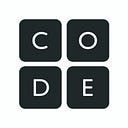Expanding computer science access to Native American students
Native American communities have unique experiences, barriers, and challenges in offering and fully engaging in computer science (CS) education in their K-12 systems. While 51% of U.S. public high schools currently offer computer science, only 20% of high schools located on Native American reservation land do so. Just 59% of Native American and Native Alaskan students attend a school that offers computer science.
Code.org is passionate about working to close this gap in access. Thanks to seed funding from Google.org, our team began its Native American and Indigenous Peoples Initiative (NAIPI) and set out to learn from students, teachers, and administrators, as well as develop new relationships to learn how to better support Native communities.
How to close the gap
The Code.org team determined that to help close these access gaps, our organization and others across the CS education landscape must:
- Better understand the specific reasons why Native American schools and students do not have access to CS education, and
- Build partnerships with native communities to take strategic and intentional approaches to increase participation by Native American K-12 students and the engagement of their teachers.
We began to build a network of CS teachers in majority native communities, and developed a monthly virtual community gathering of these teachers — building on the Native American Code Writers Program work from 2017 in the Four Corners region of Colorado, Utah, Arizona, and New Mexico. This network has grown over the last year and now encompasses more than 45 teachers — from the Navajo, Hopi, Rosebud, and Muckleshoot nations — from Maine to Hawaii teaching grades K through community college.
“I think gathering and talking — making connections — is really important to support one another in these efforts,” said one network member in a post-gathering survey. “Building a community of people who are passionate about this work is critical.”
Another participant wrote, “There was so much insight on parts of CS I hadn’t even considered to be possible for indigenous students of all ages.”
The experience of these participants would not have been possible without the generous support and collaboration from our partners.
Fostering partnerships to make an impact
In November 2021, the Code.org team also convened a summit, in collaboration with Natives in Tech, to discuss the specific barriers in native communities and engage with teachers, educators, and decision makers in these communities. Videos of two summit sessions are available to watch here.
There were 18 native communities represented from across the United States. During the sessions, keynote speakers and panelists shared learnings about the CS education efforts in their specific native communities, while building up communities of practice for advocates, teachers, administrators who impact whether and how K-12 CS can be taught in these native — and mainly rural — communities. Registrants included classroom educators, policy makers, education directors, researchers, professional development providers, tribal leaders, and more.
Building infrastructure and support
The regular discussions and summit made it clear that rural native communities need support in infrastructure — specifically, broadband.
These schools also lack teacher capacity. In many rural schools, a principal may also be a subject-area teacher and a sports coach. The lack of capacity ensures that teachers already wear many hats and often cannot add another in order to offer computer science to their students.
Assuming infrastructure and teacher capacity needs are met, the main hurdle becomes community buy-in and relevance. Native communities already see their young people needing to leave their community in order to find work. Increasing this “brain drain” is a concern shared by many teachers and community leaders. The post-pandemic increase in remote jobs may help to address this fear; a better way would be to engage community members to discover together what benefits computer science could bring to their communities, environment, language, customs, and people.
Join the effort
This work is collaborative — it can’t be done without input from Native American communities and equity-focused partners. Are you an indigenous community member? Teacher? Leader? Student? Please connect with us at naipi@code.org to discuss how we might be able to support one another to get equitable computer science education access to your students.
— The Code.org Team
Are you interested in supporting this work? Join in funding initiatives like this that help close the access gap for Native American students across the U.S. Contact naipi@code.org for more information.
